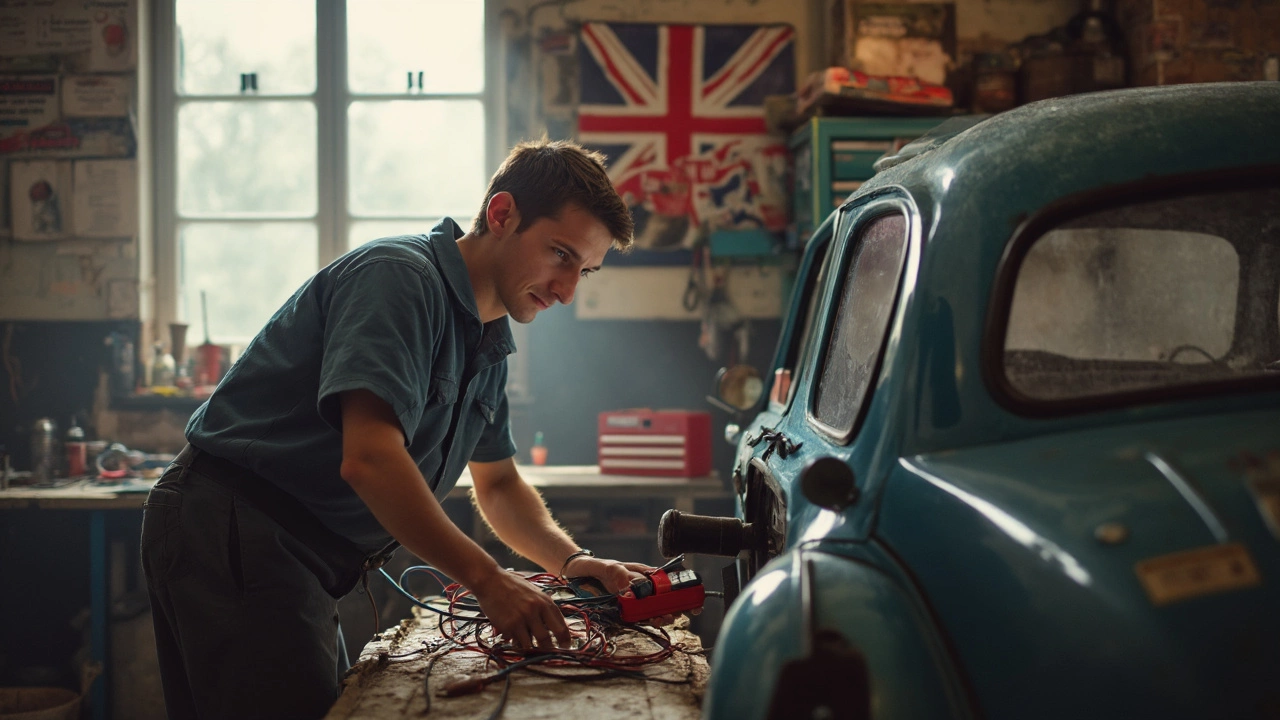Fuel Pump
When dealing with fuel pump, the device that pushes gasoline from the tank to the engine’s combustion chambers. Also known as fuel delivery pump, it is the heart of any fuel system, whether you’re behind the wheel of a family hatchback or steering a small outboard boat. The pump doesn’t work alone – a clean fuel filter, a mesh that stops dirt and rust from reaching the pump and a reliable fuel pump relay, the electrical switch that tells the pump when to run are essential partners. Together they ensure steady fuel pressure, which the engine needs to fire smoothly. Without the right pressure, you’ll see hesitation, loss of power, or a total stall. That’s why understanding each component’s role helps you diagnose problems faster and avoid costly trips to the garage.
Why the Fuel Pump Matters
Think of the fuel pump as a pump‑jack for your engine. It creates the pressure that pushes fuel through the fuel line, the hose that carries gasoline from the tank to the injectors. When pressure drops, the fuel injectors, tiny nozzles that spray fuel into each cylinder can’t atomize properly, leading to misfires and poor mileage. A simple pressure test with a gauge can reveal whether the pump is delivering the spec‑sheet 40‑60 psi most UK cars require. If the gauge reads low, the culprit might be a clogged fuel filter, a weak relay, or a pump that’s simply wearing out. In marine applications, the same rules apply but water‑pressure variations make a good pump even more critical. Regularly checking the filter, listening for a whining pump sound, and watching for engine stumble during acceleration are low‑cost habits that keep both cars and boats humming.
When you decide to replace or refurbish a fuel pump, the job starts with safety: relieve tank pressure, disconnect the battery, and drain any remaining fuel. Most DIY‑friendly models drop out of the tank with a few bolts and a strap, but you’ll still need a proper fuel pressure tester, a set of wrenches, and a clean workspace to avoid contaminating the new pump. After installation, re‑prime the system by turning the ignition on several times without starting the engine – this lets the pump build pressure before the first start. Finally, verify the pressure with a gauge and take a short test drive. If the engine runs smoothly and you notice no dips in power, you’ve likely solved the issue. The collection below dives deeper into each of these steps, offers troubleshooting flowcharts, and shares real‑world tips from UK mechanics who’ve faced stubborn pump failures on both road and water.

Can You Jump Start a Bad Fuel Pump? Real Answers for Real Car Trouble
Jun 8 2025 / Fuel PumpsEver wondered if you can jump start a car with a bad fuel pump? This article breaks down what actually happens when your fuel pump fails and if any tricks can get you back on the road. Learn the facts about jump starting, what a fuel pump really does, and what signs point to trouble. Get quick, actionable tips for dealing with fuel pump headaches. Don’t get stranded—understand what’s possible and when to call for help.
VIEW MORE
How to Test a Fuel Pump: Simple Steps for Accurate Results
Jun 3 2025 / Fuel PumpsTrying to figure out what's wrong with your car's fuel system can be frustrating, especially when the fuel pump is acting up. This article breaks down easy and practical ways to test your fuel pump, whether you're using simple tools or just paying attention to the sounds coming from your vehicle. Learn the warning signs of a failing pump and get clear step-by-step instructions to check your fuel pump like a pro. No unnecessary jargon—just real tips you can use in your own garage.
VIEW MORE
How Long Does It Take to Fix a Fuel Pump?
Mar 24 2025 / Fuel PumpsFixing a fuel pump isn't something you do every day, so knowing what to expect is key. Whether it's a personal project or you're going to the mechanic, the time it takes can vary a lot. This article dives into how long it typically takes to repair or replace a fuel pump and what you need to consider. If you've ever wondered about the complexities behind this car maintenance task, this read is for you. Discover useful tips and interesting facts to make the process smoother.
VIEW MORE
How Long Does It Take to Change a Fuel Pump?
Mar 2 2025 / Fuel PumpsReplacing a fuel pump might seem like a daunting task, but understanding the process and time involved can make it more approachable. The time it takes to remove and replace a fuel pump varies based on car make, model, and accessibility of the pump. Factors such as whether it's located inside or outside the fuel tank play a huge role. On average, the job can take anywhere from a few hours to a full day. Knowing the tools you'll need and the basic steps can help you tackle this repair more confidently.
VIEW MORE
Essential Steps for Diagnosing a Faulty Fuel Pump
Jan 7 2025 / Car MaintenanceDiagnosing a bad fuel pump involves a mix of observation, testing, and sometimes, a bit of automotive detective work. Mechanics rely on symptoms like engine sputtering or poor starting to point them in the right direction. After identifying potential issues, they use diagnostic tools to confirm a faulty fuel pump. Learning how a mechanic approaches these situations can prepare you for unexpected car troubles and emphasize the importance of regular vehicle maintenance.
VIEW MORE